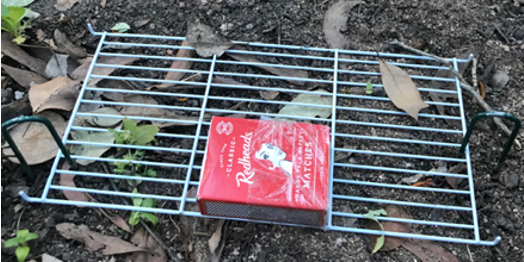Site
The study was conducted in three different habitat types:
- Farmland (Cairns, Northern Queensland)
- Rainforest (Cairns, Northern Queensland)
- Wandoo woodland (Dryandra National Park, Western Australia)
- White gum woodland (Townsville, Northern Queensland)
The woodland sites were named by their most prominent tree species in the area.





Problem-solving tests
Three different puzzle types were used in this project:



- Cylinder puzzle can be solved by pulling or pushing through the foil to get the food reward
- Trixie dog activity puzzle can be solved in two ways, by sliding the tiles or pushing/pulling the levers to access the food reward.
- Matchbox puzzle can be solved by pushing or pulling the box from the sleeve or chewing through the sleeve/box
Bait types
Puzzles were baited with various bait types to attract and target as many different groups of Australian species, including small-bodied mammals, medium-sized mammals, and carinvores:
- Sunflower seeds
- Fruits (bananas and apples)
- Rolled oats
- Peanut butter
- Meat (minced and sardines)
One bait type was used for each puzzle type and presented for three consecutive days. Thereafter, the bait type was changed, and a new bait type was used.
Experimental procedure
A camera trap was used to record 1-minute-long videos when triggered by movement. The cameras were placed within 1 meter of the puzzle, facing the puzzle. The camera was tied to a tree or wooden stick and the puzzles were secured to the ground using tent pecks, to ensure they could not be carried away. The puzzles were baited with the specific bait type, which is the food reward.
The following information was recoded from each video:
- Species – species were identified to genus or species level using field guides
- Number of contacts with the puzzle
- Whether or not the animal solved the puzzle
- How the animal solved the puzzle
